Slag & Refractories
The Slag & Refractories Research Department conducts research and development on processing/application technology for slag generated in the ironmaking and steelmaking processes, as well as R&D on refractories, which support high temperature processes.
Technology for Improvement of Slag Product Quality
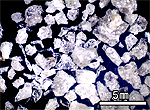
Water granulated slag
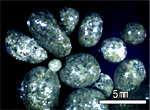
Air granulated slag
The Slag & Refractories Research Dept. is developing control technologies and treatment methods for improvement of the quality of slag products such as roadbed materials, fine aggregate for concrete, civil engineering materials, and raw materials for cement, etc., and techniques for building into the product the shape/quality required to meet the customers·needs.
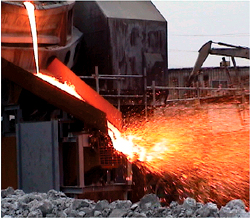
Air granulated slag production experiment
Technology for Improvement of Steel Manufacturing Processes Using Refractories
The Slag & Refractories Research Dept. is also developing refractories, which are indispensable in high temperature steel manufacturing processes, and is optimizing use technologies through refractory wear measurement in actual use environments and laboratory experiments/evaluations, etc.
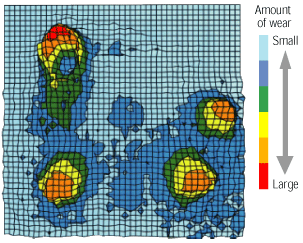
Example of measurement of wear distribution of converter bottom refractories by laser distance meter
Development of New Environment-Friendly Slag Products
Taking advantage of the chemical and physical properties of slag, as well as the hydrolysis reaction and carbonation reaction in slag materials, the Slag & Refractories Dept. is developing various forms of coastal environment remediation materials and materials for improvement of urban environments. By actively promoting of slag application technologies, the Department is contributing simultaneously to the creation of a recycling society and improvement of the environment.
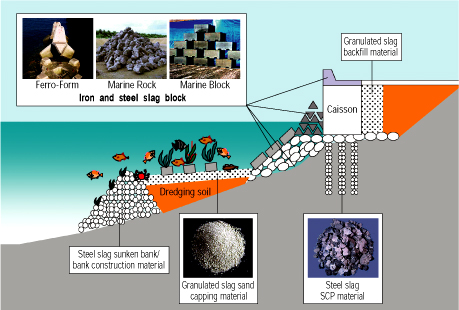
Examples of applications of marine civil engineering materials using slag with environmental remediation
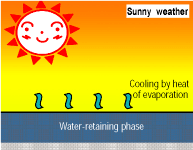
Concept of road surface/external air cooling by water-retaining pavement material “Road Cool”
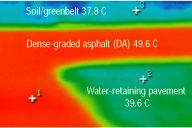
Effect of “Road Cool” in reducing temperature of road surface
